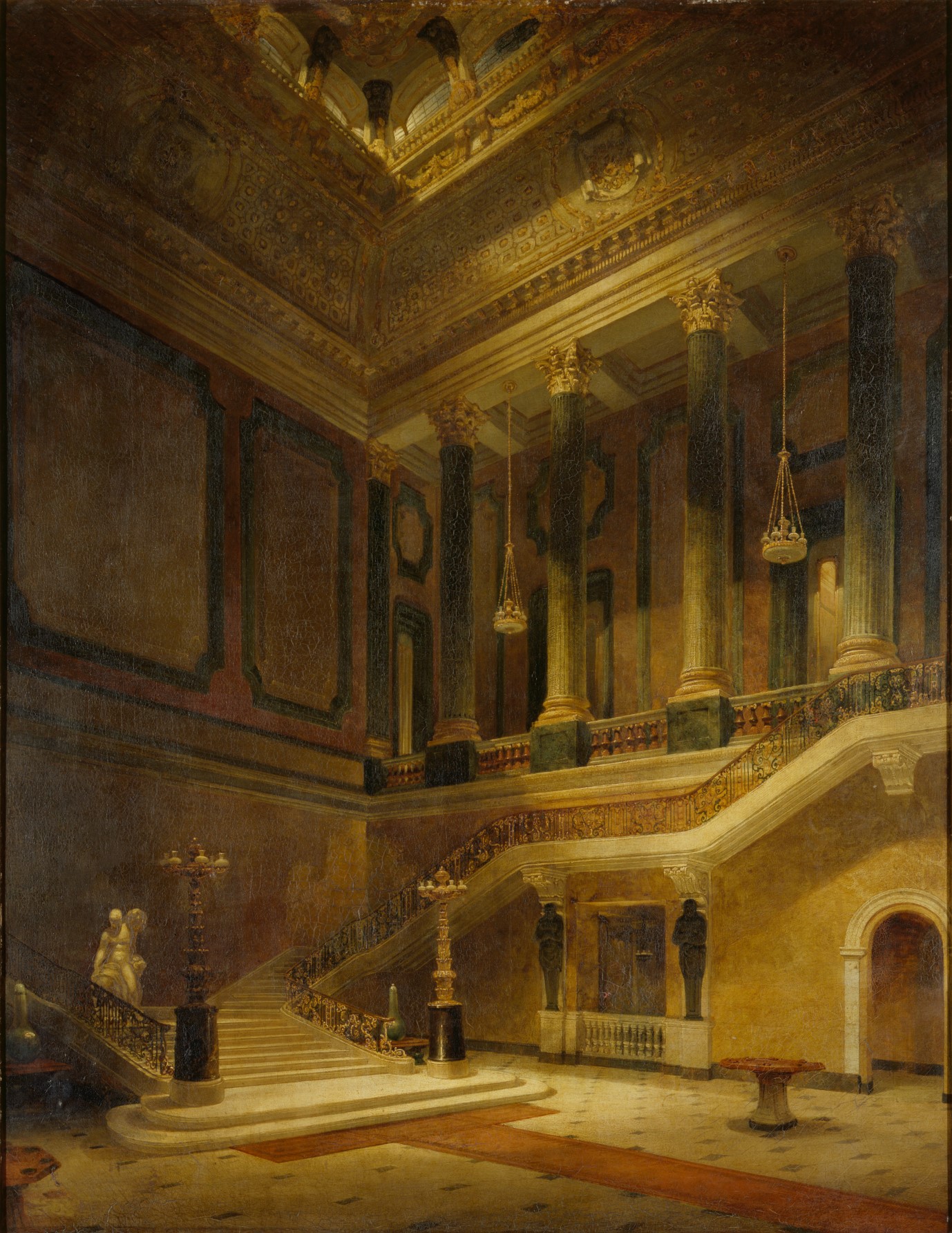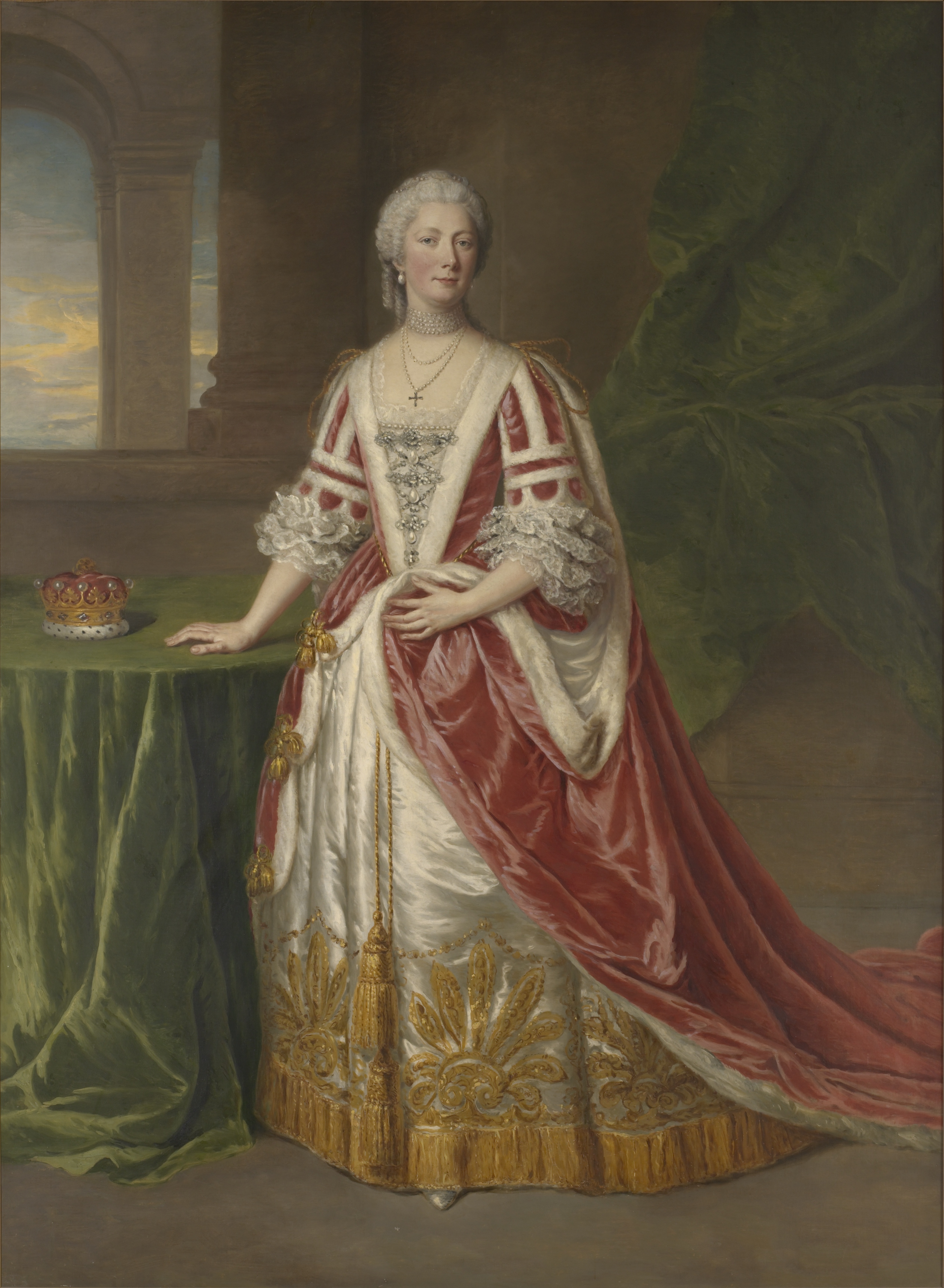The art of Lancaster House
The spectacular setting of Lancaster House may look familiar if you have watched The Young Victoria, The King’s Speech or The Crown.
The story of the finest town house in London, once known as Stafford House, begins in the early 19th century.

Approaching the grand, sweeping staircase with its iron gilt balustrade and walking past a suite of verde antico (green marble) Corinthian columns, one begins to understand the vision that the Marquess of Stafford had for this house.
A painting by David Roberts, commissioned by the Marquess in 1830, and now in the Government Art Collection, captures this sumptuous example of classical monumentality mixed with rococo revival, and designed by architects Benjamin and Philip Wyatt.
Notable by their absence from this picture are the copies of mythological and religious paintings by Paolo Veronese and Il Pordenone, made by Giuseppe Gallo Lorenzi in 1846 and placed on the scagliola walls at the top of the staircase.
Reaching the principal floor of this Georgian property and passing under the luminous lantern supported by twelve shrouded herms (squared stone pillars), the most impressive rooms in the House lie ahead.
In 1841, The Marquess of Stafford’s son, the 2nd Duke of Sutherland and his wife, Harriet, opened the Picture Gallery, made to showcase their unrivalled art collection of Spanish, French, Dutch, Italian and British masterpieces.
Described at the time as “the most magnificent room in London”, this extraordinary space, in the style of Louis XIV, runs along the entire east front of the house on the first floor.
It is decorated with an opulent display of dark crimson and gold furniture, a coffered ceiling topped with a lantern, and date-palm ornaments by Charles Barry, the architect of the Palace of Westminster.
It was in this gallery that Queen Victoria once celebrated her birthday, while musicians such as Franz Liszt and Frédéric Chopin also played here.
With the dispersal of this collection in 1913, Stafford House saw the closing of a chapter in its history and the beginning of a new one, as it assumed a new identity as Lancaster House.
Walking in the Picture Gallery today, it can be seen how the layered history of this house has been carefully preserved.
Two paintings by James Digman Wingfield, on loan from the Government Art Collection (displayed above and below), show the Picture Gallery as it appeared in 1848.
These sources have allowed for an accurate reconstruction of the intimate atmosphere of the house and its inhabitants, its art collection and salon-style display.

Looking around carefully, it is still possible to notice the original architectural features and decoration of the house as well as a work from the Sutherland collection placed in the ceiling: Guercino’s St Chrysogonus Being Borne by Angels.
The other paintings on display today are from the Government Art Collection (to the side and below).
These Dutch, French, Italian and British old master paintings, ranging the 17th to 19th century, add to the story of this house while maintaining the spirit with which the original owners had envisaged it.
With such surroundings, it is easy to relive the 19th century candle-lit balls, the lavish receptions and visits from heads of states, and perhaps hear Queen Victoria saying to the Duchess of Sutherland: “I have come from my house, to your palace.”
If you would like to view the entire collection of 240 pieces of art in Lancaster House, please visit the Government Art Collection website.
